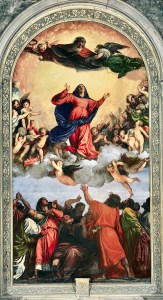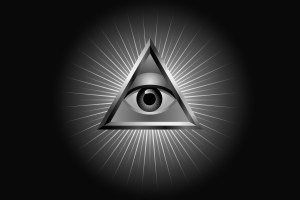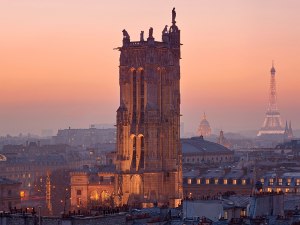We support our Publishers and Content Creators. You can view this story on their website by CLICKING HERE.
 The Assumption of the Blessed Virgin Mary is one of the Marian dogmas and mysteries of the rosary that is a mystery in more than a devotional sense. Non-Catholic Christians will declare that it was only invented by the Catholic Church in the twentieth century. To be sure, the dogma was defined by Pope Pius XII in 1950, but the belief is more ancient than that.
The Assumption of the Blessed Virgin Mary is one of the Marian dogmas and mysteries of the rosary that is a mystery in more than a devotional sense. Non-Catholic Christians will declare that it was only invented by the Catholic Church in the twentieth century. To be sure, the dogma was defined by Pope Pius XII in 1950, but the belief is more ancient than that.
However, it is not very ancient. The sign of the woman clothed in the sun in Revelation 12 is taken as evidence for the Assumption, but what actually happened at the end of the Virgin’s life is not recorded in the New Testament; indeed the first written accounts date from apocryphal writings of the fifth or possibly fourth centuries—and those writings (presumably recording earlier oral traditions) differ in many details.
Did the Virgin’s life end in Ephesus where she was living with the Apostle John, or did her earthly life end in Jerusalem? Did the apostles really gather from their missions across the empire to attend her deathbed as the fifth-century legends recount? Did she die a natural death after which her body was assumed into Heaven, or was she assumed into Heaven like Elijah, without dying? The Eastern Orthodox refer to the event as the Dormition (or falling asleep) of the Blessed Virgin. The Latin definition of the dogma retains this uncertainty stating,
We pronounce, declare, and define it to be a divinely revealed dogma: that the Immaculate Mother of God, the ever-Virgin Mary, having completed the course of her earthly life, was assumed body and soul into heavenly glory.
One of the intriguing details of a pilgrimage to Jerusalem is the opportunity to visit both the traditional site of the Dormition and the tomb of Mary. The first is the Benedictine Abbey on Mount Zion, and the second is the ancient church (controlled primarily by the Armenians) adjacent to Gethsemane in the Kidron Valley at the foot of the Mount of Olives.
Archeologists have discovered a first-century Jewish cemetery on the site and the church is built around an ancient empty tomb. The proximity of the Tomb of Mary to the House of Saint Ann—Mary’s traditional birthplace just inside the Lion’s Gate—lend some credence to the claim. Indeed, advocates of the site are keen to explain that this was a family tomb, and they show pilgrims the tombs of Joachim, Anna, and St. Joseph in the same church.
I heard the most winning explanation for the confusion about the end of Mary’s life from a tour guide in Jerusalem. He conflated the seemingly contradictory traditions with the New Testament, speculating that, as Acts 15 records, the apostles gathered for the Council of Jerusalem around 50 AD, and that this took place on Mount Zion in a room close to where the Last Supper and Pentecost took place.
Among them were the Apostle John and the Virgin, who traveled with him from Ephesus. While there, the Virgin Mary “fell asleep” and was buried in the family tomb in the Kidron Valley. After three days, St. Thomas, arriving late to the council, wanted to visit the Virgin’s tomb, and it was then that the apostles discovered the tomb to be empty and concluded that the Virgin had been assumed bodily into Heaven. It was a clever conflation of the various accounts, but one which no doubt the scholars would dissect critically.
Best then to conclude that the historicity of the Assumption is impossible to verify. Unlike the Gospel accounts, we have no eyewitnesses—leaving us with speculation and meditation on the event and its implications.
One of the ways of speculating and meditating is through poetry. I have been working on a cycle of poems on the mysteries of the rosary, and this poem about the Assumption of Mary visualizes her final days—either in her room in Jerusalem or in the little house in Ephesus. It also retains that intriguing ambiguity. Did she die or did she simply fall asleep?
In reading it I hope it may help to magnify this week’s holy solemnity.
Assumption
A long time she’d been fading. He noticed
how upright and still she’d sit in her chair,
gazing for silent hours through the latticed
window into the late afternoon air.She ate almost nothing, spoke even less.
He feared her mind and soul were wandering,
but she seemed alert, listening to voices
he could not hear, and always ponderingthe visitations and the strange events.
Why was she chosen to participate
in the confusion, fear and violence?
How did providence and her will relateto conceive a joy that would pierce her heart?
He saw the pale, fragile skin of her hands—
the faint pulse of the delicate veins
and her clear eyes, watching, waiting to depart.Then she rose, nodded and put out the light.
She pulled her shawl around her, crossed the room
and lay down — arms crossed, to sleep for the night-
ready at last to be carried home.
Fr Dwight Longenecker is the co-author (with David Gustafson) of Our Lady? A Catholic Evangelical Debate, which explores all of the Marian dogmas and devotions in detail. It is available at the bookstore at dwightlongenecker.com.
The Imaginative Conservative applies the principle of appreciation to the discussion of culture and politics—we approach dialogue with magnanimity rather than with mere civility. Will you help us remain a refreshing oasis in the increasingly contentious arena of modern discourse? Please consider donating now.
The featured image is “Assumption of the Virgin” (from 1516 until 1518) by Titian, and is in the public domain, courtesy of Wikimedia Commons.
Share This Story, Choose Your Platform!
Go to Top

 Conservative
Conservative  Search
Search Trending
Trending Current News
Current News 





